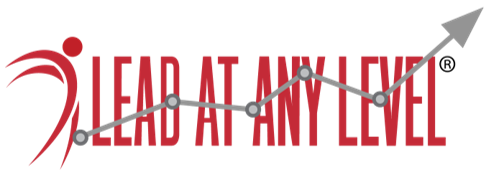Search results for: “blog”
-
![Knowledge Transfer: Increase Your Training ROI [511 words]](https://leadatanylevel.com/wp-content/uploads/2019/11/Depositphotos_107209754_l-2015.jpg)
Knowledge Transfer: Increase Your Training ROI [511 words]
During one of my programs on Creating a Learning Culture, a participant asked, “How can we demonstrate a return on investment (ROI) for our training dollars?” While I’m not a financial wizard, I can tell you that it’s easy to multiply your training value with knowledge transfer activities. What Is “Knowledge Transfer”? Knowledge transfer is a fancy…
-
![Learn on a Budget: It’s Easier Than You Think! [451 words]](https://leadatanylevel.com/wp-content/uploads/2019/11/Depositphotos_137594642_l-2015.jpg)
Learn on a Budget: It’s Easier Than You Think! [451 words]
“How Do You Learn on a Budget?” During one of my programs on Creating a Learning Culture, a participant asked, “We’re facing serious expense pressures. How can we continue to support professional development? How can we learn on a budget?” First of all, a disclaimer: One of my Strengths is Learner, which means I love…
-
![How Leaders Can Encourage Learning & Development [875 words]](https://leadatanylevel.com/wp-content/uploads/2019/11/Depositphotos_18640891_l-2015.jpg)
How Leaders Can Encourage Learning & Development [875 words]
You probably already know that organizations with a culture focused on learning & development are more profitable, more innovative, and have greater market share. But how can leaders create an environment where learning is valued and rewarded? Align with Strategic Goals Your organization’s success depends not only on your current capabilities, but also on your…
-
![Why Create a Learning Culture? [727 words]](https://leadatanylevel.com/wp-content/uploads/2019/11/DSC_2797.jpg)
Why Create a Learning Culture? [727 words]
Why Create a Learning Culture? Peter Drucker famously said, “Culture eats strategy for breakfast.” In other words, your strategy will go nowhere if your culture doesn’t support it. I would take this a step further and say “culture IS strategy.” Any goal that you intend to reach will fail, unless your culture is aligned to that…
-
![Why Your Insurance Agency Should Be More Inclusive [1033 words]](https://leadatanylevel.com/wp-content/uploads/2019/10/Depositphotos_44301071_xl-2015.jpg)
Why Your Insurance Agency Should Be More Inclusive [1033 words]
Typically, my articles speak generally to professionals in a variety of roles and industries. Today though, I want to address insurance agents directly. Why Insurance Agents? I spent more than a decade working in the insurance industry. Because of this, I appreciate the unique role insurance plays in our society. First, insurance makes all economic…
